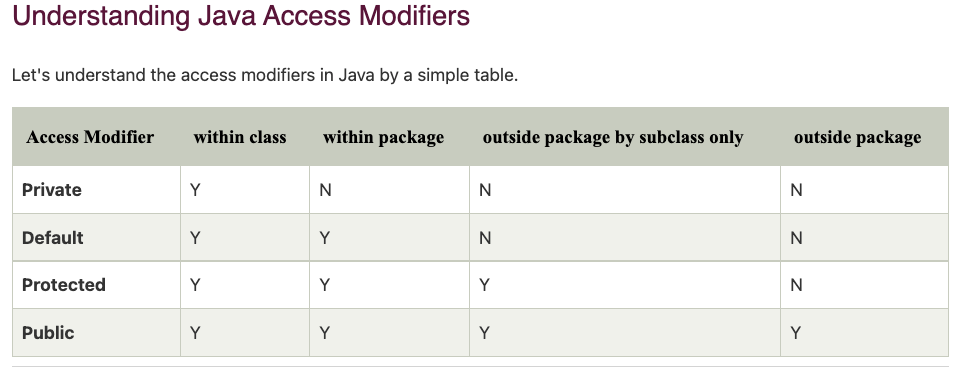[Java] OOP - 3
Static Binding and Dynamic Binding
static binding
-
When type of the object is determined at compiled time(by the compiler), it is known as static binding.
-
If there is any private, final or static method in a class, there is static binding.
class Dog{
private void eat(){System.out.println("dog is eating...");}
public static void main(String args[]){
Dog d1=new Dog();
d1.eat();
}
} Dynamic binding
- When type of the object is determined at run-time, it is known as dynamic binding.
class Animal{
void eat(){System.out.println("animal is eating...");}
}
class Dog extends Animal{
void eat(){System.out.println("dog is eating...");}
public static void main(String args[]){
Animal a=new Dog();
a.eat();
}
} - In the above example object type cannot be determined by the compiler, because the instance of Dog is also an instance of Animal.So compiler doesn't know its type, only its base type.
Java instanceof
- The java instanceof operator is used to test whether the object is an instance of the specified type (class or subclass or interface).
class Simple1{
public static void main(String args[]){
Simple1 s=new Simple1();
System.out.println(s instanceof Simple1);//true
}
} -> true
Downcasting with java instanceof operator
When Subclass type refers to the object of Parent class, it is known as downcasting. If we perform it directly, compiler gives Compilation error. If you perform it by typecasting, ClassCastException is thrown at runtime. But if we use instanceof operator, downcasting is possible.Dog d=new Animal();//Compilation error
Dog d=(Dog)new Animal(); //Compiles successfully but ClassCastException is thrown at runtimePossibility of downcasting with instanceof
class Animal { }
class Dog3 extends Animal {
static void method(Animal a) {
if(a instanceof Dog3){
Dog3 d=(Dog3)a;//downcasting
System.out.println("ok downcasting performed");
}
}
public static void main (String [] args) {
Animal a=new Dog3();
Dog3.method(a);
}
} Abstract class
- Example of Abstract class that has an abstract method
abstract class Bike{
abstract void run();
}
class Honda4 extends Bike{
void run(){System.out.println("running safely");}
public static void main(String args[]){
Bike obj = new Honda4();
obj.run();
}
} Real Scenario
abstract class Shape{
abstract void draw();
}
//In real scenario, implementation is provided by others i.e. unknown by end user
class Rectangle extends Shape{
void draw(){System.out.println("drawing rectangle");}
}
class Circle1 extends Shape{
void draw(){System.out.println("drawing circle");}
}
//In real scenario, method is called by programmer or user
class TestAbstraction1{
public static void main(String args[]){
Shape s=new Circle1();//In a real scenario, object is provided through method, e.g., getShape() method
s.draw();
}
}
Interface
- It is used to achieve abstraction.
- By interface, we can support the functionality of multiple inheritance.
- It can be used to achieve loose coupling.

